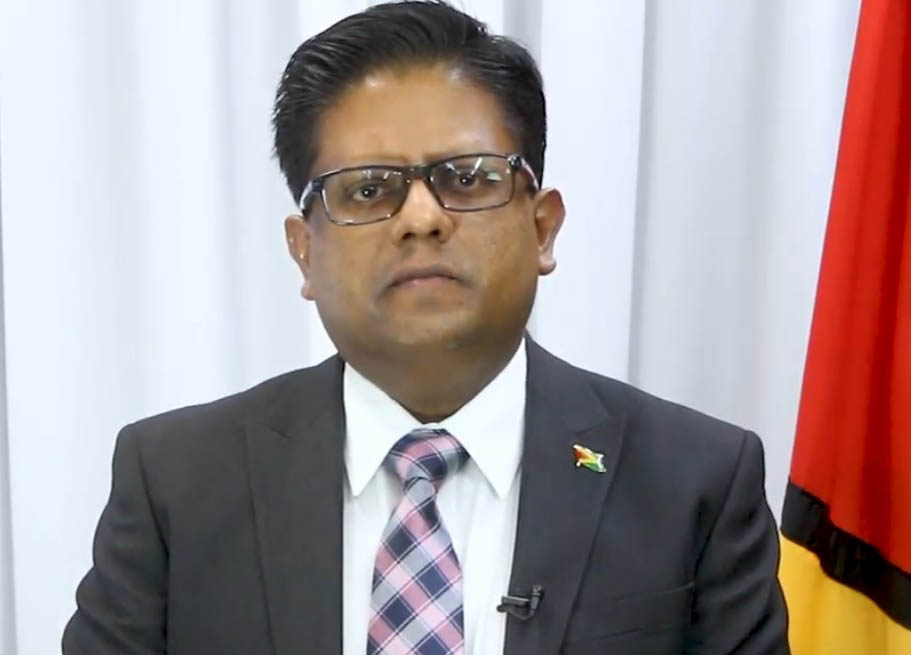The government yesterday approved massive hikes in the external and domestic debt ceilings – the second time in 30 months – signalling an aggressive borrowing campaign for massive infrastructural and other spending.
After heated debate, the current limit on external loans was lifted from $650,000,000,000 to $900,000,000,000 and domestic debt from $500,000,000,000 to $750,000,000,000.
In February of 2021, the government pushed through an increase in the external debt ceiling from $400b to $650b and the domestic debt ceiling from $150b to $500b. It means that in the span of 30 months, Guyana’s external debt ceiling has more than doubled and its domestic ceiling has been increased five-fold.
The motion was proposed yesterday morning by Senior Minister within the Office of the President with responsibility for Finance Dr. Ashni Singh, during the 66th sitting of the twelfth parliament and was passed later in the evening with Govern-ment’s majority.
In proposing the motion to so facilitate through the External Loans Increasing of Limit #48 of 2023, Singh at the same time also sought confirmation of the Public Loan Increasing of Limit Order #49 of 2023.
Singh said Government anticipated that the proposed increases in the two limits should generate little contention and receive the approval of the House; against the background of what he said is the rapid growth of the country’s economy.
According to the Senior Finance Minister, the economy over the past two years has grown in “real terms” at an average of more than 40% per annum; while adding that the growth projection for the next three to four years is no less than 25% per annum.
He said that at the same time, Government has “ensured that this real growth in the Guyanese economy is resilient, particularly from the perspective of ensuring that it is based on a diversified productive sector.”
Dynamic
He said that Govern-ment has made efforts to ensure a strong, dynamic and growing non-oil economy with significant investments in infrastructure aimed at ensuring first and foremost that sectors such as agriculture grow rapidly.
In so doing he said, “we [would] realize our long-recognized, long-heralded but as yet unrealized potential to be the bread basket of the Caribbean.”
He said that it was for this reason that Guyana, immediately upon the return of the PPP/C Party to government “was restor-ed to our place of leadership or in the Agriculture and Food Security portfolio in the CARICOM quasi- Cabinet.”
He said that there has been growth in several other sectors, pointing out tourism, which he said is now witnessing an “unpre-cedented level of private investment with no less than eight internationally branded hotels under construction and in the pipeline.”
This, he said, will see an additional 3,000 internationally branded hotel rooms.
This story, he said, is replicated in sector after sector.
He boasted the same story for non-oil extractives citing Bauxite, Gold and Manganese and many other sectors he said, which all reflect increased private investment “and are poised for rapid growth.”
Against this background, Singh said that as one’s asset base and earning capacity increases, then one’s capacity to contract and carry debt, also increases.
On this point, the Senior Finance Minister posited that there isn’t a single household in Guyana which does not understand that fundamental concept; noting that “every household in Guyana, as their income rises, and as their assets increase…their capacity to go to the Bank or to go to lenders and contract more borrowing, increases.”
He said that this is as much a debate about economic development as it is a debate about debt and debt sustainability.
Of the heckles from the Opposition benches to the motion, Singh said that their rumblings “reflect their studied opposition to development.”
According to Singh, the Opposition is well aware that “every single loan contracted by the PPP/C Government, has been invested in economic and social development, and improving the circumstances of the people.”
Singh said that under the PNC Government, from 1973 to 1991, with no oil revenue and no oil industry, the external debt ceiling was increased from five hundred million dollars to four hundred billion dollars.
The finance minister said, however, that what the PPP/C Government is proposing in 2023 with a much larger economy than that in 1991, considering relativity, is a debt ceiling of nine hundred billion dollars.
He said that the four hundred billion dollars debt ceiling in 1991, as a percentage of the gross domestic product of the country represented 1026% which he said is ten times the size of the economy.
The external debt ceiling currently being proposed, however, he said represents 24.5% of gross domestic product (GDP) today, which he noted is a mere quarter of the size of the economy as opposed to 1991.
Singh said that Government’s adjustments to the debt ceiling “keep Guyana firmly within the boundaries of a highly sustainable debt position and very strong fiscal sustainability.”
He went on to say that if Guyana’s debt was to be compared to GDP ratio, it would be seen that the country to date ranks among the nations with the lowest debt to GDP ratio across the entire hemisphere.
A statement from the Ministry of Finance last evening added that in line with the government’s commitment to maintaining its track record of transparent and prudent debt management, the increase in the debt ceilings aims to avert the dependency on utilising the Consolidated Fund overdraft as a means of financing, which was done under the APNU+AFC administration.






